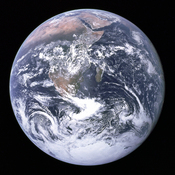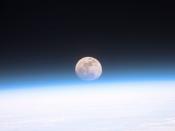The earth's moon has been a subject of intrigue to scientists for centuries. The moon is a 4.53 billion year old, rocky object covered by craters, mountains, plains and faults. It is 384,000 kilometers away from the earth and revolves around it approximately every 29 days. (Hartmann & Philips, 1986) It has little more than half the density of the earth and no atmosphere, hydrosphere, or magnetosphere. The moon is proportionally quite large when compared to the size of other moons in our solar system. Its chemical composition is largely made up of semisolid and solid rocks. While it does have a small amount of metallic objects, mainly iron, it does not have the same amount proportionally as the earth. The earth and moon's similar physical composition has been very influential to discovering how the moon became a satellite of the earth. (Chaisson & McMillan, 2004) While there are conflicting theories on how the moon became a part of the earth's system most scientists agree that it was within the first 100 million years of the solar system's creation.
(Hartmann & Philips, 1986)
The theories most commonly discussed for the creation of the moon are co-accretion, fission, capture and the cratering theory. Co-accretion is the theory that the earth and moon grew together in a satellite system. The capture theory predicted that the moon was a foreign rocky object that was seized by the earth's gravitational pull into its orbit. Fission is the theory that the moon is made up of particles of the outer layer of Earth. (Mackenzie, 1999) All three theories have recently been disproved by their inability to account for certain physical qualities of the moon.
The theory that many scientists acknowledge currently is the cratering theory. (Roach, 2003) This theory states that an object about the...


